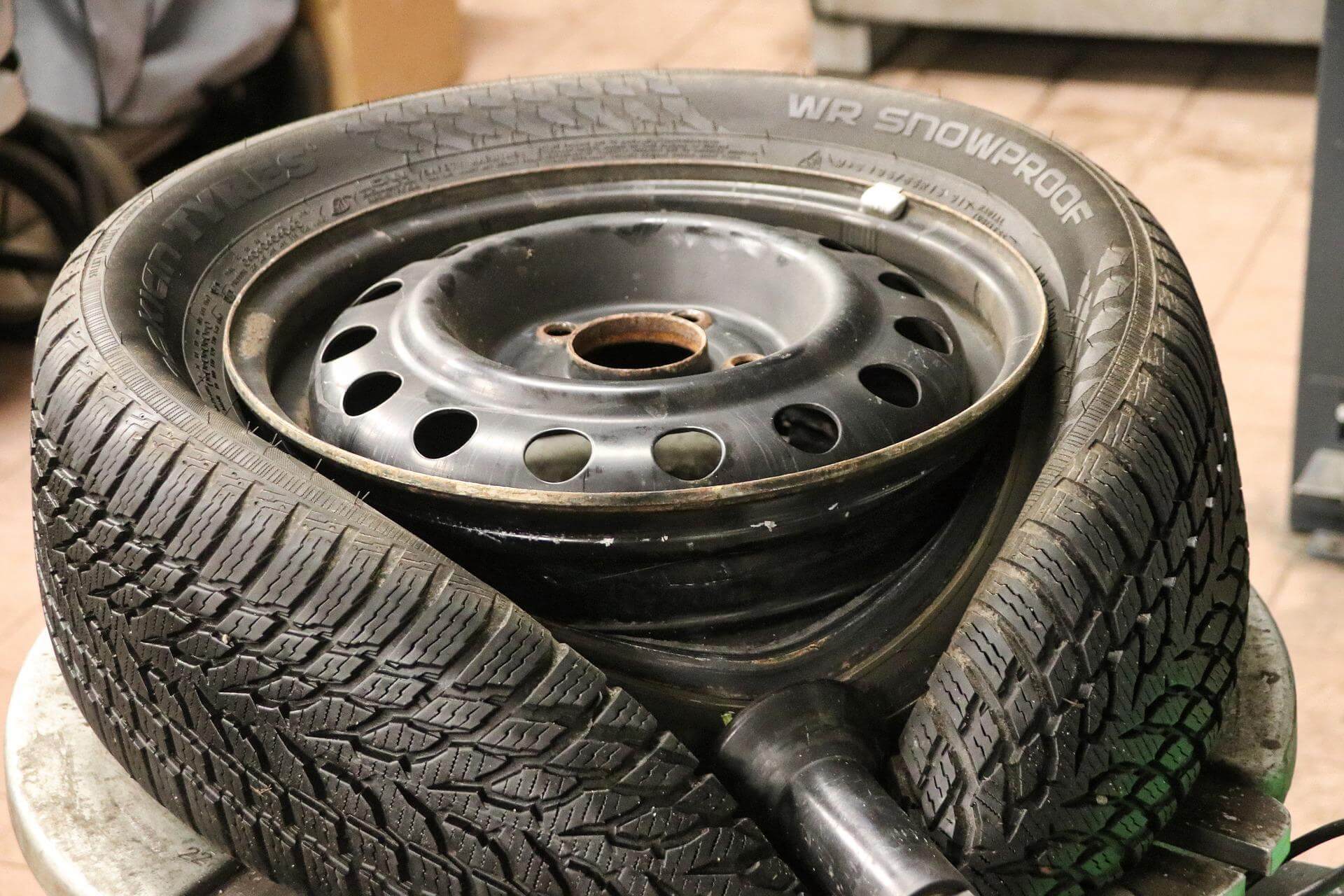06/02/2023

Changing tires or rims
Changing a rim always means changing a tire as well. After all, the tire has to be removed from the rim and mounted on a new rim. But there are other reasons to change a tire. When tires have reached their minimum tread depth or age limit, they need to be replaced. Such tire replacement is recommended only while the rim is still okay, but the tire has reached its age or tread limit or if it is damaged.
Premium Wheels recommends having the tire or rim change done by an automotive professional. If you still want to know how tire changing works, you've come to the right place. We will guide you through the process of changing tires or rims and give you valuable tips.
The first step in changing tires
The first step in changing tires or rims is to deflate the tire. To do this, remove the valve core. Then, the balancing weights inside the rim should be scraped off and the adhesive residue removed.
Separating the tire from the rim
Detaching the tire from the rim is done on a mounting machine. The wheel is placed in the appropriate holder and the bead breaker lever is used, which pushes the tire out of the rim and is applied in several places. It resembles a kind of flat shovel that is pushed between the rim and the tire. The procedure must be performed for both sides (inside and out).
Note: Make sure that the bead breaker lever is not applied too close to the rim, otherwise damage may occur.
Changing the tire with the tire changer
After the tire has been loosened from the rim with the bead breaker lever, the wheel is centered on the tire changer for final removal of the tire from the rim. The claws of the tire changer should grip the rim directly.
The arm of the tire changer is now attached to the edge of the rim. The tire (or tire bead) is pulled over the rail of the arm of the tire changer and placed over it. A tire iron is normally used to pull over the tire bead.
Removing the tire
When the tire is rotated, the rail pulls the tire bead off the rim.
The process of removal must be performed on both sides. After that, the tire is finally separated from the rim.
➜ Tip: Remember to remove the old rubber valve from the rim.
Mounting a new tire
To mount a tire on a rim, you must first insert a new valve into the corresponding hole at the rim and tighten it.
When choosing new tires, make sure that they fit the rims. You should be able to find the right tire size for your vehicle in your vehicle documents.
Note: When mounting, make sure that the DOT number on the tire always matches that of the rim.
The tire is now coated on the rubber lip with tire mounting paste or another grease-containing lubricant. Next, the tire is placed on the rail of the mounting machine arm and slowly screwed in. Another mounting arm helps to press the tire into the rim as it is turned in. The arm is placed directly against the outside of the tire and assists in positioning the tire on the rim.
The tire is then inflated slightly for the first time so that it fits the rim.
➜ Tip: The tire must be well visible against the rim!
The process is now repeated for the back of the wheel, then the tire is fully inflated.
Now, new balancing weights have to be glued into the inside of the rim. A special machine is used to determine the correct weight. The tire change is finished!
You can find the right rim for your vehicle here on Premium Wheels!
Changing the tires cannot hurt - but they should drive as far as possible before that! In these articles, we show you how to get the best performance out of your tires:
- Why changing your tires is important
- How to spot original aluminium rims
- Summer tires: Tipps and tricks for the change
- When’s the time for new rims?
- The markings on your tire
- The tire profile
Interested in more tricks, tips and advice about wheels and rims? Here you can find our Premium Wheels guide:























